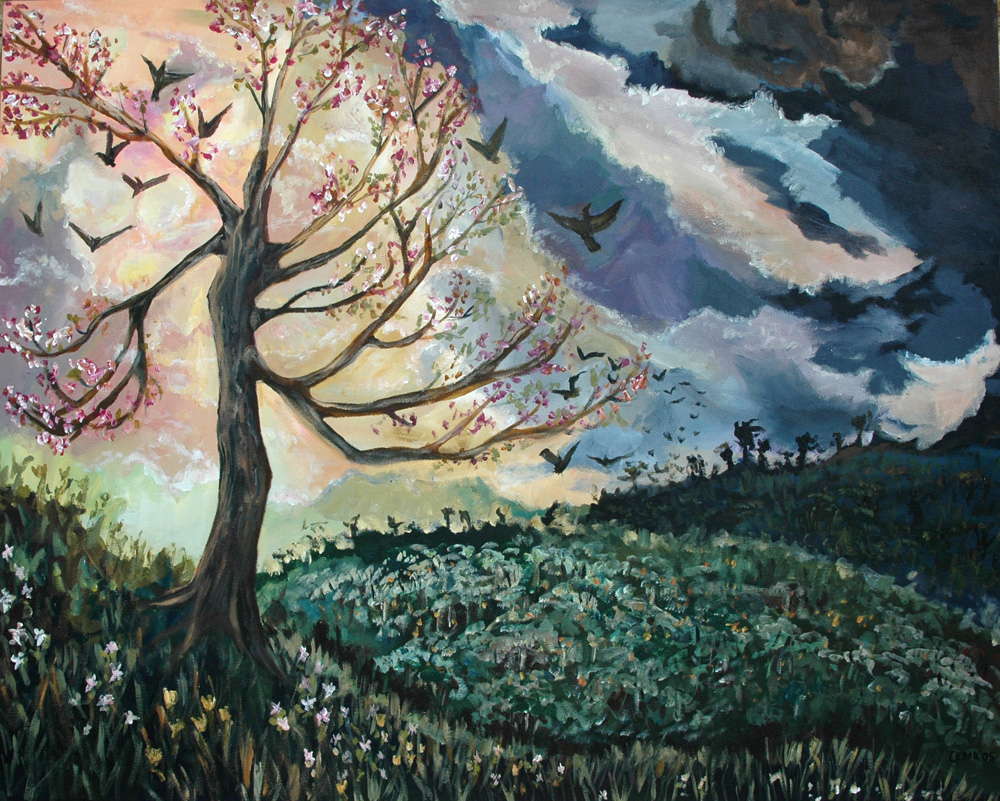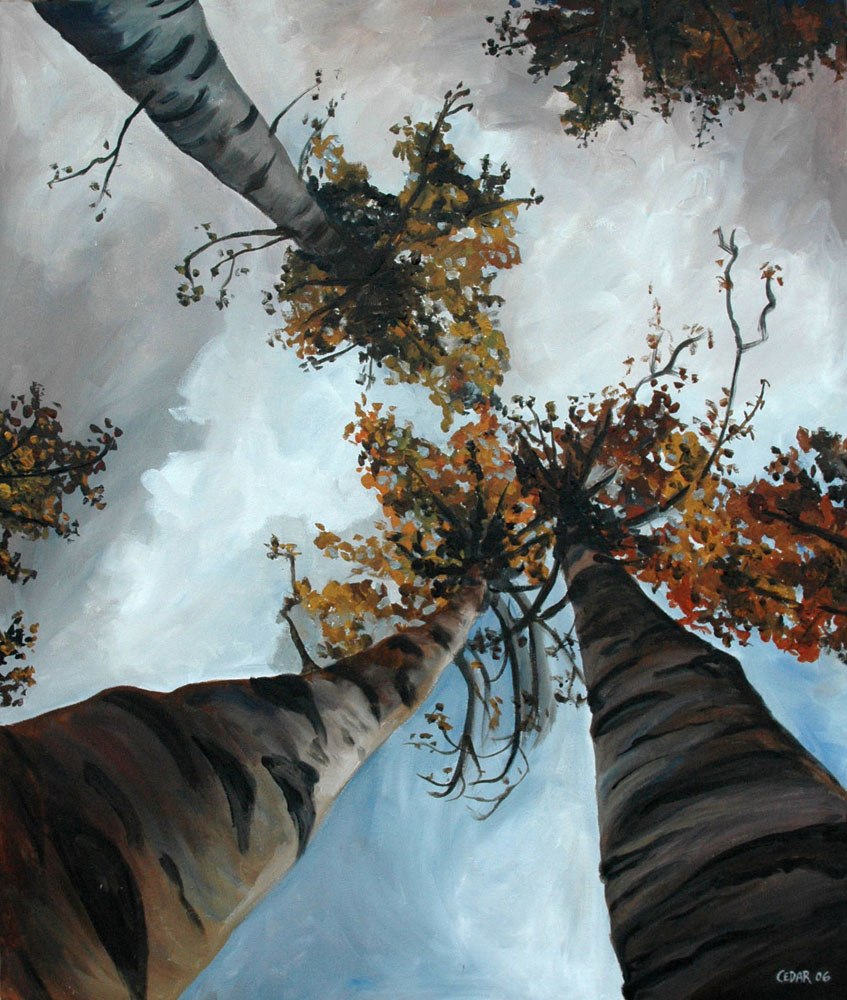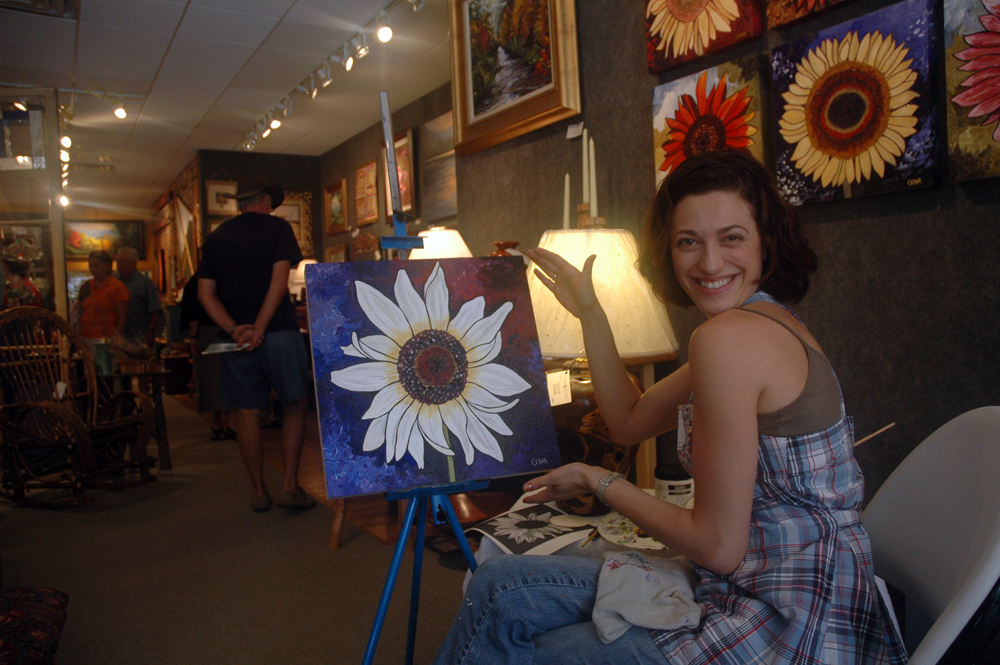This post is for my fellow painters and other studio artists, especially those just starting out.
Can you make money doing what you love?
I’ve found there’s sometimes a stigma attached to artists who make a lot of money (or sometimes, any money!) selling their art, and an assumption that they must have compromised their personal vision to such an extent that that what they’re doing is akin to prostitution, and no longer real or true. I’ve also found there is a lot of pain and bitterness amongst people who wanted at one time to be professional artists but failed.
Here’s what I think: it’s easier to blame the outside world for a failure than to take responsibility for it and begin again more intelligently. If you can dismiss the few artists who succeed financially as flukes, or if just being financially successful means they’re not true and soulful artists anymore, then you never have to even admit you’ve failed! It’s so convenient to just say that our society doesn’t value “real art;” it is impossible to make a living doing it; case closed.
One of my close friends recently posted this article on her Facebook. It’s about a studio artist struggling to make ends meet financially. A lively debate followed in the comments of the Facebook post. One person, at first glance, seemed to have palpable hostility for visual artists, saying that they are deluded and unrealistic—that they usually make mediocre things there is no demand for, over-price them, then whine and complain when they don’t sell anything—as if the world owes them a good living for doing nothing special.
Then a few people pointed out that our culture has virtually no such thing as art appreciation, and how messed up that is—as one person said, “it’s a shame when we live in a world that values ring tones and fantasy football more than the talents of our community.” (And I get that! Brings to mind this video I just saw.)
A few other people said that the harsh reality, unfair as it may be, is that it’s simply not possible to make a living as an artist, and that artists need to get over themselves and stop thinking of themselves as professionals, since in reality almost all artists are just hobbyists pretending to be professionals—in short, wannabes. The general consensus seemed to be that the outlook for artists was bleak indeed.

I sympathized with the artist in question, and this whole conversation struck a chord with me. I very strongly disagree that it’s “impossible” to make money as an artist! At the same time, it is absolutely imperative to have a business strategy, even a vague one, before attempting to sell art professionally. Even then, you may at first crash and burn, like the “whining” artist in the article. But I would argue that she should not just give up—there is still plenty of hope for her and for anyone struggling in her position.
If you want to make money with your art, here’s what you have to do.
1. Get Good
I will admit that I do get tired of seeing so many people producing work that isn’t up to snuff and then wondering why nobody will pay them for it. I’m not claiming to be anywhere near my potential skill level, but I am proficient enough to make some work that speaks to people.
Visual artists (I’m speaking mostly of painters, but all studio arts apply) need to take their work seriously and commit to a studio practice so they develop their skills. You need to constantly, enthusiastically, practice your craft so that you get better! You can’t expect a demand for work that isn’t technically proficient, interesting, and inspired. I’m not saying you have to feel like a master before trying to sell your work—(in my experience, no matter how good you get this feeling never comes—and if it does it’s probably a sign that you’ve stopped searching, which is bad for you and your art!) Just wait till you have some degree of confidence that you are offering something likely to have value to someone else.

2. Target Your Audience
In order to sell your art, you have to have a plan for who’s going to buy it. Even if you don’t have a clue, you can start with a guess, put feelers out, and make an attempt before moving on. You can’t just hang your work in a coffee shop and hope an art collector walks in and happens to discover you. You can’t just select a gallery at random out of a phone book and ask them to sell your abstract paintings for you, without ever considering that they only sell traditional landscapes. Spend some time thinking about it. You need to be very purposeful about targeting your audience directly. Figure out whether a niche exists for what you do, and get your work in front of people who want to see it!
3. Always Consider Demand
If you find yourself putting out work that is pretty good and reasonably priced, but nobody’s buying it, that’s a sign that it’s time to re-evaluate. Your work may be under-developed technically (Does it look unfinished? Are you using poor quality materials?) it may be over-priced (see my recent video on how to price your work) or it you may just not be putting it in front of the right people’s eyes.
If none of these are the case, and your work is still not selling, change your artistic direction and see what happens. Even a slight change may fix the problem—use a different medium or color scheme. Keep the medium and the colors but paint a different subject. As long as your wheels keep turning and you feel excited about working, you can and should change your direction if your art is not selling. I know this is not what you want to hear if you have your heart set on doing a very specific thing, but I strongly believe it’s possible to find what sells without giving up on your personal inner vision for your work. You just need to be willing to try different things, have fun doing it, and go with the flow.

When I first set out to sell my artwork, the most difficult thing was finding my style and creating a consistent body of work. For me, finding what sold, was a natural, if purposeful, consequence of searching for what I should paint in the first place. I forced myself to begin working in series. I found something I enjoyed painting (trees, at first) and made myself paint them past the point where I didn’t want to anymore. I took a break to move on from that to something else (skies) for a while, then found myself able to go back to the trees with fresh eyes and fresh purpose. A few things I tried didn’t pan out in a long-term way (portraits, cats, etc.) and that’s okay. Someday I may go back to those things. To this day I constantly flip-flop back and forth between a few different themes. This keeps me consistent without getting burned out, bored, or too formulaic.

Here’s how I decided which paintings to focus on: I painted whatever I wanted, but made sure I was painting a few different things at once. I tried to sell what I painted by putting it in front of people whom I presumed might like it. The things that sold easily and quickly, I kept painting. The things that didn’t, I abandoned (at least for the moment.) I then repeated this process, and plan to do so infinitely. Voila—I get to paint what I want, but I also sell my paintings. If you want to be a painter, you have to 1) love what you’re doing BUT ALSO 2) paint things that other people want to buy. Finding the balance between those things can be frustrating, but if you stick with it, it works. Which leads me to:
4. Never Give Up
This one’s so important. You definitely won’t sell any art if you give up the first (or the hundredth) time you fail at it. If it’s not working, try again but better. Repeat. Trial and error works, but it is not for quitters. Stick-to-itiveness is vital.

Thank you for your informative blog! I am going to read this and try to follow some of your very good advice! Please stop by my blog and tell me what you think of my paintings some time. Love your sunflowers!
Michelle
Hi Michelle,
I just visited your blog. I looove your cityscape painting!!
Hello, just came accross your blog and enjoyed reading it! This post is very good!Really love it! You write very well! I also recently started to work full time as an artist you can take a look at my website if you like: http://www.jartstudiogallery.com or blog: http://wwwjartstudiogallery.blogspot.com/
PS. I like your trees series very much and your portraits 🙂
Hi Jacqueline,
Thank you!
Your paintings are interesting. I’m especially impressed with your portraits as I know how hard it is to nail them. And good job on the blog! If only I had the dedication to post weekly videos. 🙂 I think it’s great so keep it up!
hello,
I just discovered your Utube videos and find them very informative and encouraging. You work is beautiful, interesting and insightful. In my situation I have gone to art school and recieved my masters in clay, then left the art world (for 20 years) and now I am attempting to return it.
Jeanne
Thanks for following me online Jeanne! Nice to meet you.
Hello Cedar,
I found you through your YouTube videos, and became a follower. So glad I did because it was very informative! Your voice and presence have a soothing/calming effect, and I see that essence imbued into your ethereal paintings. Your work would be a great fit for yoga studios and spas.
I had a question I hope you can share your expertise…
Do you only sell originals or do you also have, or plan on, making different size print reproductions of your work?
Where I’m going with this is…
In one of your videos (pricing your work – I believe), you talked about making your work accessible (price wise) to your target audience. And at the same token, maintaining consistency (say if I make 40″x40″ collaged/abstract pieces, stick to the 40″ x 40″ format).
If I price my originals say for $3000, but a smaller scale reproduction print/canvas wrap for $120, I’d be reaching a much wider audience who wants to own my work but do not have the budget for an original.
It seems to me if I only stick to one size of artwork it might limit my sales (?)
What’s your opinion on printing and reproducing your work? Some artist invest in a large format printers to do that at home, but reading some customer reviews it’s questionable regarding the quality of the reproduction prints.
Have you considered reproducing your work, or would that be another undertaking that would take you away from your studio and present too many options?
Would love to read your thoughts on this 😉
Irma
That’s it exactly–it’s not that I’m not interested in print production, necessarily, just that my current endeavors–selling my originals–are taking up all the focus I have. So for me, this is a possibility for the future but I’ve not yet done it on a large scale. I do sell prints occasionally (on demand) but in my experience, when you’re just doing one or two of them, the cost of printing cancels out the price I charge to my customer, so I am literally making zero profit, or maybe a dollar or two–not at all a money-making thing when done on a small scale. But I do it anyway whenever I get a request, to try to give my customers what they want! (And sometimes they request a print for the lower cost, so why not?)
Of course there is lots of demand out there for prints and obviously it can be profitable when done on a large enough scale. But doing it on a large scale is a gigantic effort which isn’t realistic for most artists who are also selling their originals–unless of course, you get someone else to manage that endeavor for you. 🙂 My 2 cents.
This is great and inspiring, thank you for sharing this.